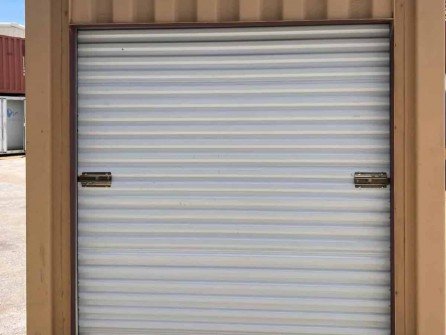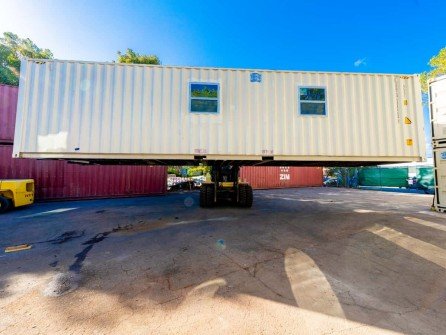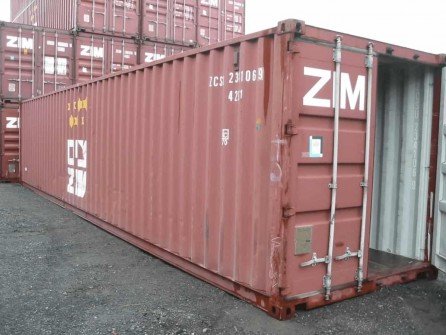Shipping containers have entirely changed how cargo is transported across oceans by ships. Containerization has increased the overall cargo-carrying capacity and the ability to ensure the safety of the cargo.
As a result, various shipping containers are being built and used to ship different types of cargo around the globe. This also resulted in containers being used as homes, offices, cafés, etc. as well, since their sturdiness attracted a lot of attention from architects and designers.
In this article, we will discuss the materials and components of shipping containers to give you an idea of what you are looking for when you want to buy shipping containers.
What are Shipping Container Materials?
Materials like steel, aluminum, fiber-reinforced polymer, etc., or a combination of all of these, are used to make shipping containers. Still, they are mostly made of Corten steel, also referred to as weathering (self-healing) steel.
The terms Corten (or CORTEN), occasionally used interchangeably, are a trademark of U.S. Steel. The name derives from the steel's two primary characteristics: tensile strength and corrosion resistance.
It is a very sturdy material that can be welded and resists rust, as the name would imply. The surface rust stops further erosion when weathering painted steel sustains a chip or has its paint worn off by the elements.
Corten steel is unique in that it does not require painting to prevent rusting. It is the only group of steel alloys that is resistant to rust.
As a result, container manufacturers prefer Corten steel because it does not require painting.
Due to its inclusion of additional non-metallic elements like silicon, sulfur, and carbon, Corten is referred to as alloy steel. This kind of steel typically contains the metals iron, copper, manganese, nickel, and chromium.
It might come as a surprise to learn that people also perform a lot of manual labor in the construction of shipping containers, in addition to machines. That is why in this next step, we will be dealing with the making process of shipping containers, step by step.
- Wall Panels
The wall panels are where the construction of a shipping container starts. Large steel sheets are divided into smaller sheets, then primed and sand-blasted to remove contaminants like dust.
They are then corrugated, giving shipping containers their wave-like texture and strengthening the walls. The tubular frame and the corrugated sheets are joined by welding.
- Floor Frame Assembly
The floor frame assembly primarily comprises two longer I-beams that are perpendicular to each other.
Then, to create a slab-like base, shorter I-beams are welded in between the longer I-beams. The floor frame is then sanded with a flap disc angle grinder to remove any rough welding joints after the welding is finished.
To ensure the safety and longevity of the wood floors, the flooring is pressure-treated with FDA-approved chemicals, including pesticides and anti-decomposing agents.
- Doors and Corner Posts
After the sides of the container are completed, the front and back of the container are built. Like the side walls, the doors are primarily corrugated steel. The corrugated steel is encased in square steel tubing after it has been cut to size.
The floor frame is then covered with doors and wall panels. The corner posts, walls, and door are then welded in place, followed by the roof panel assembly and attachment.
- Completion of the Box
After these steps, the box is almost completed. The door frames are lifted by cranes to be set on top of the floor frame and joined with welding. The roof panel is welded into place last, followed by the lifting and welding of the wall panels.
- Priming and Painting
After constructing the shipping container's carcass, it must be primed and painted to protect it from harsh environments. The first layer of paint to be sprayed on the container is priming (undercoating).
This ensures that subsequent layers of paint adhere better to the container and adds an extra layer of protection to the container. The container is spray-painted several times after the primer has dried.
Multiple layers of paint protect the container from the harsh elements of sea travel, such as salt and water. After the flooring panels are varnished, the floor is installed in the frame to protect the wood from water and pest damage.
Finally, the container's bottom is waterproofed, and rubber seals are installed on the door.
- Flooring
After that, the wooden flooring must be installed over the floor frame. Six plywood panels will be used to floor the container. The steel floor beams are screwed into the pressure-treated panels inside the container.
- Identification
The shipping containers can then be customized with company logos and decals.
Additionally, they require labels with distinctive identification codes that can be used anywhere in the world to recognize the container. There are 11 alphanumeric characters in the identification code, each with a distinct meaning.
The owner of the container is identified using the first three letters. A Product Group Code, which can be U, J, or Z, is the fourth character (U stands for shipping container; J for any type of equipment that can be attached to a shipping container, such as a power unit; and Z stands for transport trailer for a shipping container).
The fifth to tenth characters comprise a serial number assigned by the container's owner. The owner of the specified container uses this serial number to identify the container.
A Check Digit is the final character. It is used to validate the previous ten characters. The door handles and locking mechanism are attached after the container has been labeled. A rubber seal is wrapped around the doors to ensure that they are watertight.
- Testing
Spraying a waterproof sealant on the container's underside is the last step in the manufacturing process for shipping containers. The container is now finished and ready to be transported, assuming no flaws or leaks exist.
Conclusion
Shipping containers play a significant role in international trade, shipping operations, and logistics. With global trade activity on the rise, shipping container production can only rise. The structures are simple, which makes it simple to change them.
This explains why people have recently been turning them into incredibly useful living, working, and storage spaces. They are adaptable, very customizable, and simple to install. Adding windows, doors, lighting, and climate control to a container is possible.
The typical lifespan of lease/rental containers is 10–12 years. The durability of shipping containers will depend on several factors. The most crucial elements are how well you take care of it and whether the exterior is appropriately painted or maintained, possibly by using insulation techniques like cladding.
FAQ
- How thick is the floor of a shipping container?
A standard container's floor has a thickness of 27mm (1.1 inches) and an underside clearance of roughly 6 inches (150mm).
- What is the floor of a shipping container made of?
Typically, the floors of shipping containers are made of wood—more specifically, plywood. The 28mm-thick plywood flooring is sealed with an elastic sealant. Utilizing zinc-plated screws, this is fastened to the steel cross members.
- Do shipping containers rust?
Shipping containers are almost always made of steel, which is an iron alloy. Thus: yes, they can, but only over a very long period of time. The effects can be lessened by adding specific types of paint that prevent the build-up of rust.
Rust, however, will inevitably occur due to the harsh environments that containers are exposed to.
















